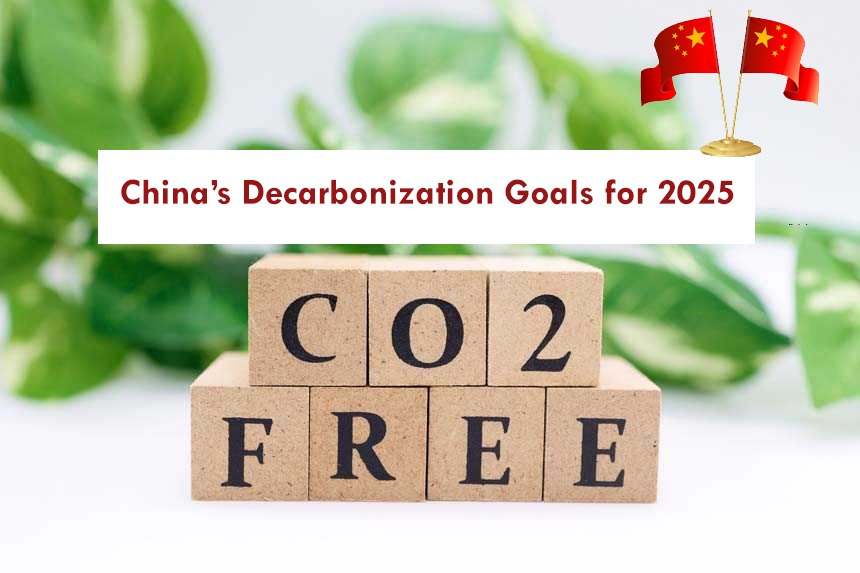China’s Decarbonization Goals for 2025

China has been increasingly promoting and advocating the concept of green finance as a central strategy to achieve its ambitious decarbonization goals for 2025 and beyond. In order to implement the major decisions and arrangements of the CPC Central Committee and the State Council on carbon peaking and carbon neutrality, the country is making significant efforts in the important area of green finance and actively supporting green and low-carbon development. This system focuses on environmental improvement, climate change response, and the conservation and efficient use of resources.
Over the past decade, China has played an instrumental role in fostering high standards and openness within the green finance framework, improving incentive and constraint mechanisms. Additionally, it has actively advocated for and advanced international cooperation on green finance, recognizing the need for a global approach to protect our home planet.
China has rolled out regulations and policies aimed at reducing fuel consumption from new cars and trucks while also encouraging a significant shift towards electric vehicles (EVs). It has witnessed a spectacular flourishing of China’s EV market, positioning the country as a global leader in clean transportation. Conversely, adaptation of a “high ambition” approach with more ambitious but practicable measures by 2035 will align China with its 2060 net-zero pledge. However, sustained policy developments will be necessary post-2035 to achieve a 70%–80% reduction in emissions by 2050 and ultimately reach near-zero emissions by 2060.
It’s important to highlight that under current technology forecasts, internal combustion engine efficiency improvement is coming close to reaching cost-effective limits, and work has shown that electric cars in China have already reached cost parity with their conventional fuel counterparts in terms of total cost of ownership, with the tipping point for various models of electric commercial vehicles potentially arriving as early as 2025. China will establish GHG emission standards with a robust compliance program for cars and trucks, under which new cars would need to be zero-emission fleet-wide, and average new heavy-duty vehicles would cut two-thirds of carbon intensity or fuel consumption by 2035. China is considering a compatible zero-emission vehicle roadmap that requires 100% zero-emission for new sales of passenger cars and 40%–75% electric share of new sales of MHCVs by 2035 and 100% zero-emission for new sales of MHCVs fleet-wide by 2040.
The focus on rapid decarbonization encompasses pathways that promote job growth, economic opportunity, and a just transition across the energy and industrial value chains.
Energy and industrial transformation are mutually reinforcing and have been long-standing focus areas for achieving carbon neutrality. According to China’s 14th Five-Year Plan (FYP), peaking greenhouse gas emissions by 2025 is a crucial milestone to achieve China’s goal achieve carbon neutrality before 2060. While these long-term commitments position China among nations supporting global carbon neutrality efforts, the near-term targets outlined in the 14th FYP are more modest and in alignment with global climate stabilization goals. The 14th FYP emphasizes controlling total energy consumption, curbing high-emissions, energy-intensive projects, promoting hydropower and renewable energy, advancing new energy and intelligent vehicles, and establishing national industrial innovation centers in strategic fields, including new energy. Significant progress has been made in China’s low-carbon energy business, with renewable energy project capacity in development plans increasing fourfold. By 2025, a final investment decision on renewable energy development projects is expected to be completed, aiming for 20 GW capacity and 50 GW by 2030.
Accelerating the transition to cleaner energy as part of this strategy could significantly follow global environmental commitments made at the 15th session of the Conference of the Parties to the Convention on Biological Diversity (CBD COP15) and the 26th session of the Conference of Parties to the United Nations Framework Convention on Climate Change (COP26).
The carbon neutrality commitment will play an important role in accelerating China’s low-carbon energy transition to rapidly reduce economy-wide emissions towards net zero, with a central pathway to achieve this goal being the generation of most electricity from non-fossil-fuel sources and the quick expansion of this clean power wherever possible. China’s current renewable energy infrastructure builds and improves upon the infrastructure necessary to connect power production facilities with the power supply network, and as overall capacity and efficiency increase, policymakers are expected to release more policies and regulations aimed at reducing carbon emissions in specific areas of the economy and roll out more incentives to encourage the participation of private capital in the country’s energy transition.
In conclusion, China’s decarbonization goals for 2025 involve a multifaceted approach that includes advancing green finance, stringent emission regulations, significant investment in renewable energy, and an overall commitment to a sustainable and environmentally friendly future. With these efforts, international best practices, and continuous policy evolution, China aims to achieve its ambitious carbon neutrality targets, setting an example for global climate action


